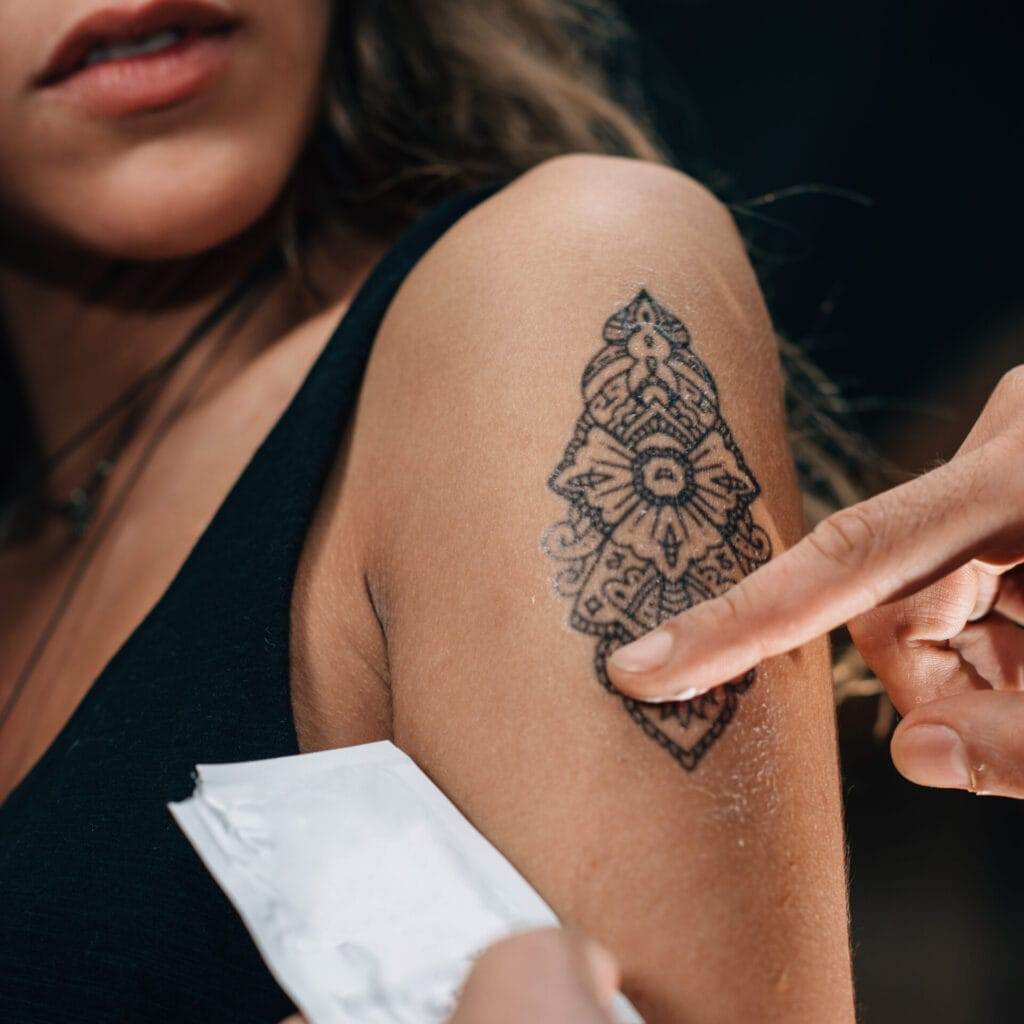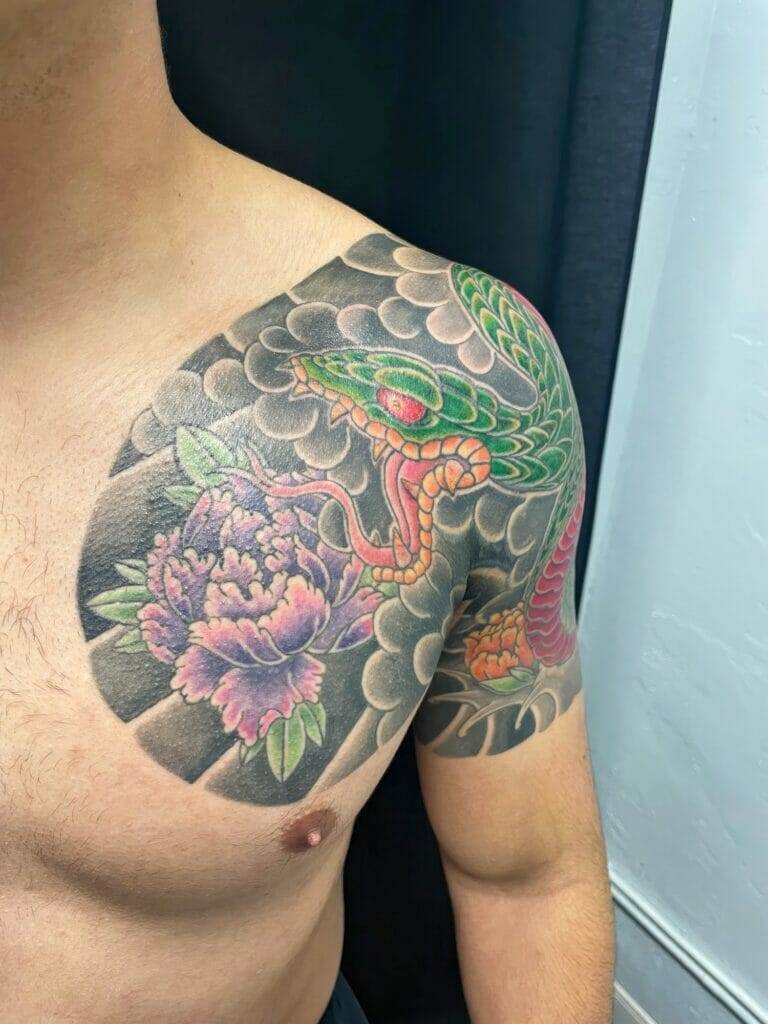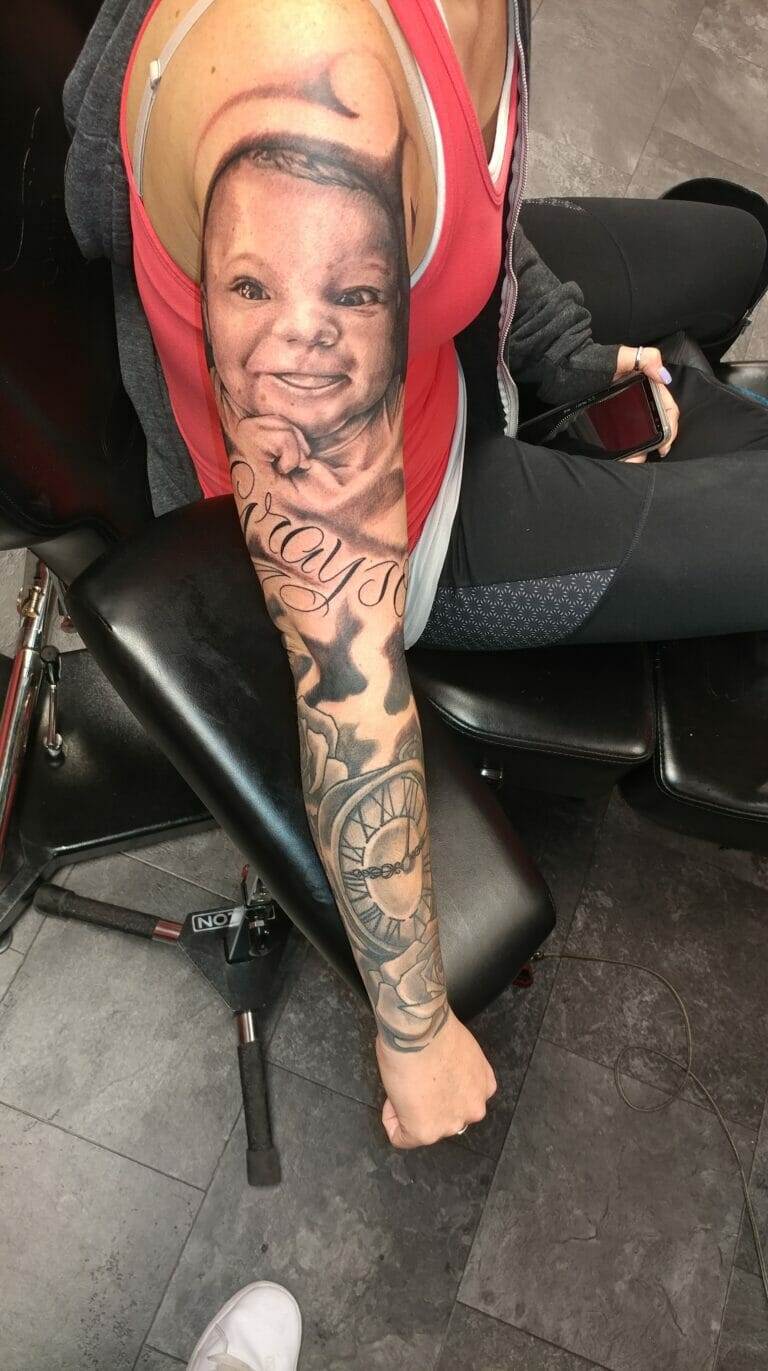
Introduction
Understanding the Importance of Tattoo Aftercare
Getting a tattoo is more than just a momentary thrill; it’s a commitment to a piece of art that will live on your skin. However, the journey doesn’t end once the ink is applied. Tattoo aftercare is a crucial phase that ensures your tattoo heals correctly, looks vibrant, and remains healthy for years to come. Ignoring aftercare can lead to fading, infection, or unsatisfactory results, diminishing the value of your investment. Many individuals underestimate the importance of proper aftercare, viewing it as optional. However, adopting an effective aftercare routine is essential for protecting both your skin and your new tattoo. This process involves understanding how to properly clean and moisturize the tattooed area, as well as actively monitoring for any signs of complications.
Benefits of Proper Aftercare
Implementing a thorough aftercare regimen provides a myriad of benefits:
- Enhanced Healing: Following recommended aftercare practices promotes rapid healing by keeping the tattooed area clean and hydrated.
- Vibrant Color Retention: Properly cared-for tattoos retain their colors and sharpness longer, ensuring that your artwork remains striking.
- Reduced Infection Risk: By keeping the tattoo clean and avoiding exposure to contaminants, you significantly lower the risk of developing infections.
- Minimized Scabbing: Gentle cleaning and moisturizing help prevent excessive scabbing and peeling, which can lead to color loss and unevenness.
- Increased Comfort: Effective aftercare minimizes itchiness and discomfort, creating a more pleasant healing experience.
Remember, investing time and effort in tattoo aftercare is as vital as selecting the right design and artist. This commitment not only safeguards your tattoo but also enhances its long-term appeal, allowing you to proudly display your work of art for years to come.

Preparing for Your New Tattoo
Choosing the Right Tattoo Artist
When it comes to getting a tattoo, selecting the right tattoo artist is a critical step in the preparation process. A good artist not only possesses technical skills but also understands the importance of aftercare, ensuring that you receive the best results possible. To make an informed choice, consider the following factors:
- Portfolio Review: Examine the artist’s portfolio to gauge their style. Look for consistency and quality in their work. Are the lines clean? Do the colors pop? This will give you insight into what the artist can achieve.
- Sterilization Practices: It’s essential to choose an artist who follows rigorous hygiene protocols. Ensure that they use sterilized equipment and disposable needles to reduce the risk of infection.
- Client Feedback: Research online reviews and testimonials from previous clients. Positive experiences often indicate reliability and professionalism.
- Consultation: Book a consultation to discuss your tattoo idea and evaluate how you feel with the artist. Comfort and trust are key to a successful tattoo journey.
Once you’ve chosen your artist, it’s time to delve into the next crucial aspect of preparing for your tattoo.
Understanding the Aftercare Instructions
Every tattoo artist will provide specific aftercare instructions tailored to your individual tattoo. Understanding and following these guidelines is fundamental to ensuring a smooth healing process. Here’s how to prepare for this aspect:
- Ask Questions: Don’t hesitate to inquire about aftercare during your consultation. Understanding the rationale behind each step will help you stay dedicated.
- Take Notes: Write down instructions or take a photo of the guidelines provided. This will serve as a handy reference post-tattoo.
- Gather Supplies: Prepare essential aftercare products in advance. Common items include:
- Mild, fragrance-free soap
- Healing ointment or lotion
- Non-stick bandages or plastic wrap
By taking the time to carefully choose the right artist and comprehensively understand the aftercare instructions, you’re already laying the foundation for a successful tattoo experience. Remember, the more prepared you are, the more confident you’ll feel as you embark on this exciting journey of self-expression.
Immediate Aftercare Steps
Cleaning Your New Tattoo
The moment your tattoo is complete, the immediate aftercare steps begin, starting with cleaning your new artwork. This process is vital for preventing infection and ensuring that the tattoo heals beautifully. First and foremost, ensure your hands are clean. Wash them thoroughly with soap and water before touching your tattoo. Here’s a step-by-step guide to cleaning your new tattoo effectively:
- Remove the Bandage: Your artist will cover your tattoo with a bandage or plastic wrap. After a few hours, gently peel it off to prevent ripping the skin.
- Rinse with Lukewarm Water: Hold the tattoo under lukewarm (not hot) running water to rinse off any blood or excess ink. Avoid direct water pressure on the tattooed area.
- Use Mild Soap: Apply a small amount of mild, fragrance-free soap to your fingertips and gently clean the tattoo. Avoid using a washcloth or anything abrasive. Rinse well.
- Pat Dry: Use a clean, soft towel to carefully pat the tattoo dry. Do not rub or scrub.
During this initial cleaning phase, listen to your body—if you feel any discomfort, take it slow. Keeping the area clean will not only minimize the risk of infection but also set the stage for optimal healing.
Applying Healing Ointment
After your tattoo is clean and dry, it’s time to apply a healing ointment. This step is critical for keeping your skin moisturized and aiding the healing process. Here’s how to do it right:
- Choose an Appropriate Ointment: Follow your artist’s recommendations. Common options include specialized tattoo aftercare ointments, unscented lotions, or natural oils.
- Apply a Thin Layer: Using clean fingers, spread a thin layer of ointment over the tattoo. A little goes a long way—avoid heavy applications, as this can suffocate the skin.
- Frequency of Application: For the first few days, reapply the ointment 2-3 times daily or as instructed. Once the tattoo starts to peel or scab, switch to a fragrance-free moisturizer.
- Avoid Picking: A key reminder during this stage—resist the urge to pick, scratch, or scrape at your tattoo. This can lead to scarring and disrupt the healing process.
By diligently cleaning your tattoo and applying healing ointment, you are laying the groundwork for a beautiful and lasting piece of art. Remember, these initial aftercare steps are essential for maintaining the quality and vibrancy of your tattoo long-term.
Long-Term Aftercare Tips
Protecting Your Tattoo from Sunlight
Once your tattoo has healed, it’s crucial to give it the care it deserves to maintain its vibrancy and detail. One major factor that can affect the longevity of your ink is sunlight. Just like how the sun can fade your favorite pair of jeans, it can also dull your tattoo over time. Here are some effective ways to protect your tattoo from harmful UV rays:
- Use Sunscreen: Apply a broad-spectrum sunscreen with at least SPF 30 or higher on your tattooed areas whenever you plan to be in the sun. Look for sunscreen that is free of fragrances, as these can irritate newly healed skin.
- Seek Shade: Whenever possible, stay in the shade, especially during peak sun hours (10 a.m. to 4 p.m.). This minimizes direct exposure and reduces the risk of sun damage.
- Wear Protective Clothing: If you anticipate prolonged sun exposure, consider wearing clothing that covers your tattoo. Specialized sun shirts or wraps can help keep your skin shielded.
- Avoid Tanning Beds: Artificial UV light can fade tattoos just as easily as natural sunlight. Steer clear of tanning beds to protect your ink.
Keeping your tattoo protected from sunlight not only preserves its color and integrity but also keeps your skin healthy and safe.
Keeping Your Skin Moisturized
In addition to sun protection, maintaining hydration in your skin is another critical component of long-term tattoo care. Well-moisturized skin not only looks better but also helps keep your tattoo crisp and vibrant. Here are some easy tips for ensuring your skin stays hydrated:
- Choose the Right Moisturizer: Select a fragrance-free lotion or moisturizer that contains natural ingredients, such as aloe vera or shea butter. These components effectively nourish the skin.
- Establish a Routine: Incorporate moisturizing into your daily skincare routine, particularly after showering when your skin tends to be more receptive. Apply moisturizer on your tattooed areas at least once a day.
- Stay Hydrated: Drinking plenty of water is essential for overall skin health. Hydrated skin translates to a more vibrant appearance for your tattoo.
- Monitor Changes: Pay attention to your tattoo and skin condition over time. If you notice any areas of fading or dryness, consider adjusting your moisturizing routine or consulting with a dermatologist.
By protecting your tattoo from sunlight and keeping your skin moisturized, you significantly enhance its longevity and appearance. Investing time in these long-term aftercare tips will ensure your tattoo remains a stunning expression of your individuality.

Avoiding Common Aftercare Mistakes
Overwashing Your Tattoo
While keeping your tattoo clean is essential, it is equally important to avoid the common mistake of overwashing. In the excitement of caring for their new ink, many individuals tend to wash their tattoos far too frequently, thinking they are being diligent. However, overwashing can lead to irritation, dryness, and even prolonged healing times. Here are some key points to keep in mind:
- Stick to the Recommended Frequency: Typically, washing your tattoo twice a day is sufficient. Too much cleansing can strip the skin of its natural oils, which are vital for healing.
- Choose Gentle Products: Use only mild, unscented soap, as harsh soaps can further irritate the skin. Opting for products designed for sensitive skin can help minimize any adverse effects.
- Watch for Irritation: If your tattoo begins to feel excessively dry or irritated, it may be a sign of overwashing. If this occurs, reduce the frequency of washes and increase moisture application instead.
Finding the right balance in your washing routine is crucial for promoting a healthy healing process. Remember, gentle care will go a long way in preserving your tattoo’s quality.
Ignoring Signs of Infection
Another critical component of tattoo aftercare is being vigilant about potential signs of infection. Recognizing the early symptoms can prevent complications that could affect the appearance and health of your tattoo. Here’s what to look out for:
- Unusual Redness or Swelling: A certain degree of redness and swelling is normal immediately following a tattoo. However, if the area becomes increasingly tender or red, it may indicate an infection.
- Pus or Oozing: Any pus-like discharge or excessive fluid that appears green or yellow is a clear sign that something may be wrong. Healthy tattoos should not produce this type of fluid.
- Fever or Chills: If you begin to experience systemic symptoms like fever or chills alongside your tattoo, it’s essential to seek medical attention promptly.
- Pain that Worsens: If the pain around your tattoo escalates instead of improving, it’s a signal to reach out to a healthcare provider.
Being proactive about recognizing and addressing signs of infection can save you from future discomfort and preserve the integrity of your tattoo. By understanding and avoiding these common aftercare mistakes, you ensure that your tattoo remains as stunning as the day it was inked.






